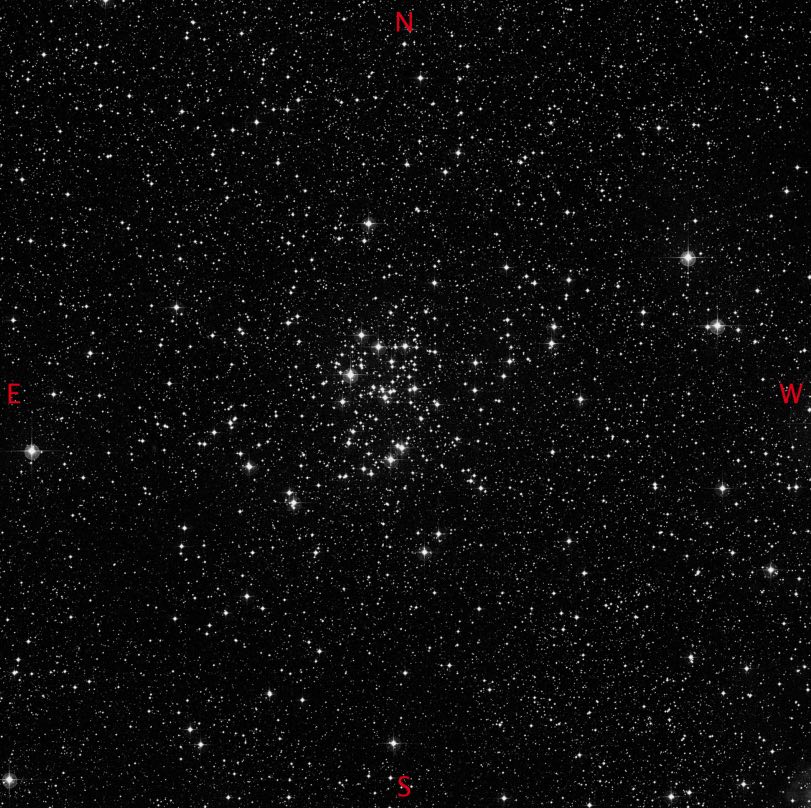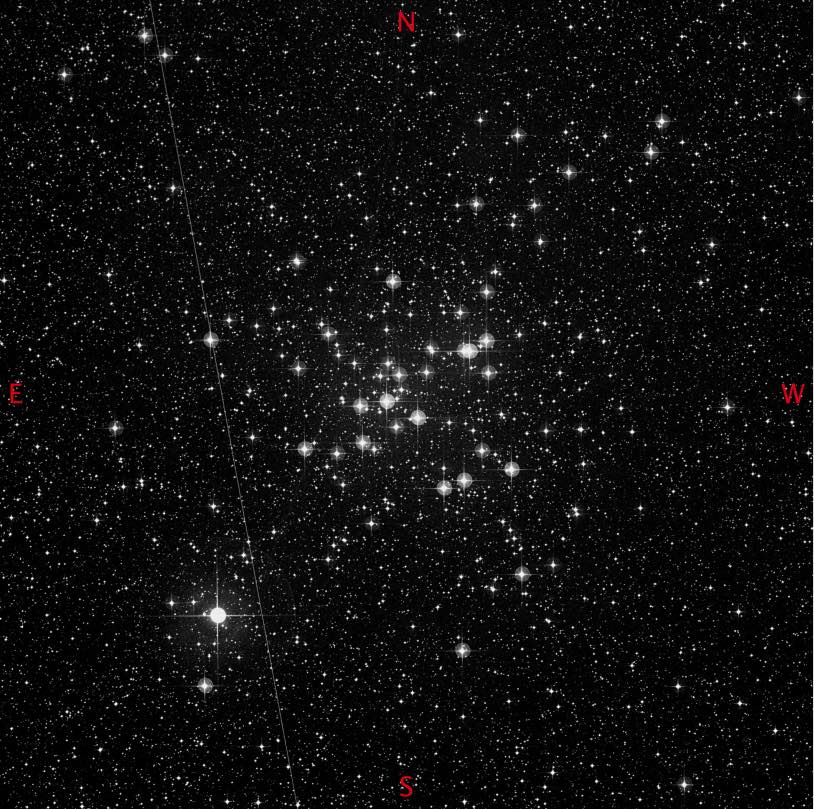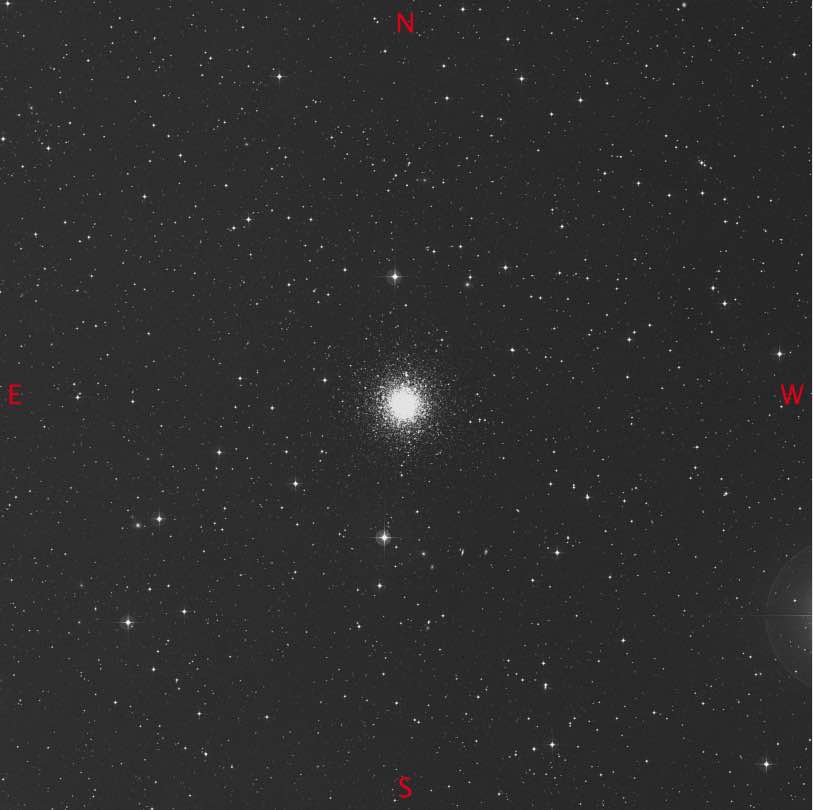Well after a slap-up Christmas Dinner, the last thing you might think of doing is sticking your head out the door to see if it’s clear. Well I did and it was. Earlier that day my ‘Scope Nights’ weather app said it was going to be clear between 21:00 and midnight – But Oh come on, this is Late December and I have 12 days off work. What could the ‘Cloud Lady’ possibly be thinking of by giving me clear skies at this time of year 🙂
Thinking that I still had a number of objects needed to complete my list of Messier observations, I fired up Astroplanner to see if the remaining 7 objects were going to be up. Apart from M55 , all were visible over the next few hours, but only just. There wasn’t much a Moon up, but the usual 20 degree layer of thin murk was hovering above the horizon.
Session Data
- Date: 25/12/2014
- Time: 22:06 – 00:36 UT
- Seeing: I Perfectly Stable,
- Transparency: III Mostly Clear,
- Temp:5.0c,
- Air Pressure: 1035mb,
- Humidity: 79%,
- Wind Speed: 3mph,
- VLM at Zenith: 4.3mag
M50, NGC2323

In the Altair Astro 250mm, 40mm Plossl, 51 X, 52′ West is to the 10 O’Clock.
Initial views show a 6 arc/sec flat oval of 10.0 mag stars at the FOV centre running N/S . At the SW end of this oval, is a line of stars that run NW to SE extending 36 arc/sec across. This line forms a very flat ‘W” shape with the open ends facing NE. You could imagine these continuing to form two large circles like butterfly wings but the circle of stars doesn’t complete. It’s like the mind is filling in the blanks to form a pattern that isn’t actually there.
M41, NGC2287

In the Altair Astro 250mm, 40mm Plossl, 51 X, 52′ West is to the 10 O’Clock.
Conditions deteriorating slightly to IV: Somewhat Clear. The main concentration of the cluster occupies a diameter of 30 arc/sec and is made up of about twelve 7.0 to 9.0 mag stars. The cluster extends to the edge of the FOV to the NNW, but is split by a dark corridor where the star field is not so dense. Just to the SW of centre are a couple of 7.5mag Orange stars.
Switching to the TMB 80 f/6, 26mm Plossl, 18 X, 2.8° the cluster has a definite cross shape oriented NS/EW The greater concentration of stars are concentrated in a N/W orientation. The TMB gives a better overall view.
M47, NGC2422

In the Altair Astro 250mm, 40mm Plossl, 51 X, 52′ West is to the 10 O’Clock.
The main body of the cluster occupies 20 arc/sec. The three principle bright stars of 5.7 to 6.5 mag form a line running roughly E/W.
Changing to the TMB 80 f/6, 26mm Plossl, 18 X, 2.8° doesn’t improve the view any. The chart shows the cluster NGC2423 40 arc/min to the North, but this wasn’t resolved by the TMB.
M46, NGC2437

In the Altair Astro 250mm, 40mm Plossl, 51 X, 52′ West is to the 10 O’Clock.
What a difference to all the previous clusters observed in this session. The Cluster is much more condensed with many more fainter stars that spread out to the edge of the FOV. This spreading of stars makes it difficult to estimate the diameter of the cluster, but the central core seems to be contained within a 10 arc/min circle.
What is slightly worrying is that I didn’t notice the Planetary Nebula NGC2438 just to the North of centre. Looking at my catalogue settings for the night, the NGC catalogue wasn’t turned on, so labels were not displayed alerting me of its presence.
In the TMB 80 f/6, 26mm Plossl, 18 X, 2.8°, the cluster is much fainter, but now appears as an island against the background. M47 can be seen at the Western edge of the FOV.
M93, NGC24447
M93 would have been observed had it now been hidden by a line of trees at the edge of the Observatory field.
M79, NGC1904

In the Altair Astro 250mm, 14mm Delos, 145 X, 29.8′, West is to the 11 O’Clock.
M79 sits in between two 8.8 and 9.2 mag stars. The object through 4.0 air masses doesn’t extend to anywhere near its 9 arc/min size and I estimated it nearer 3 arc/min with a bright unresolvable core. Switching to the Altair Astro 250mm, 10mm Delos, 203 X, 21.3′, didn’t improve the view at all.